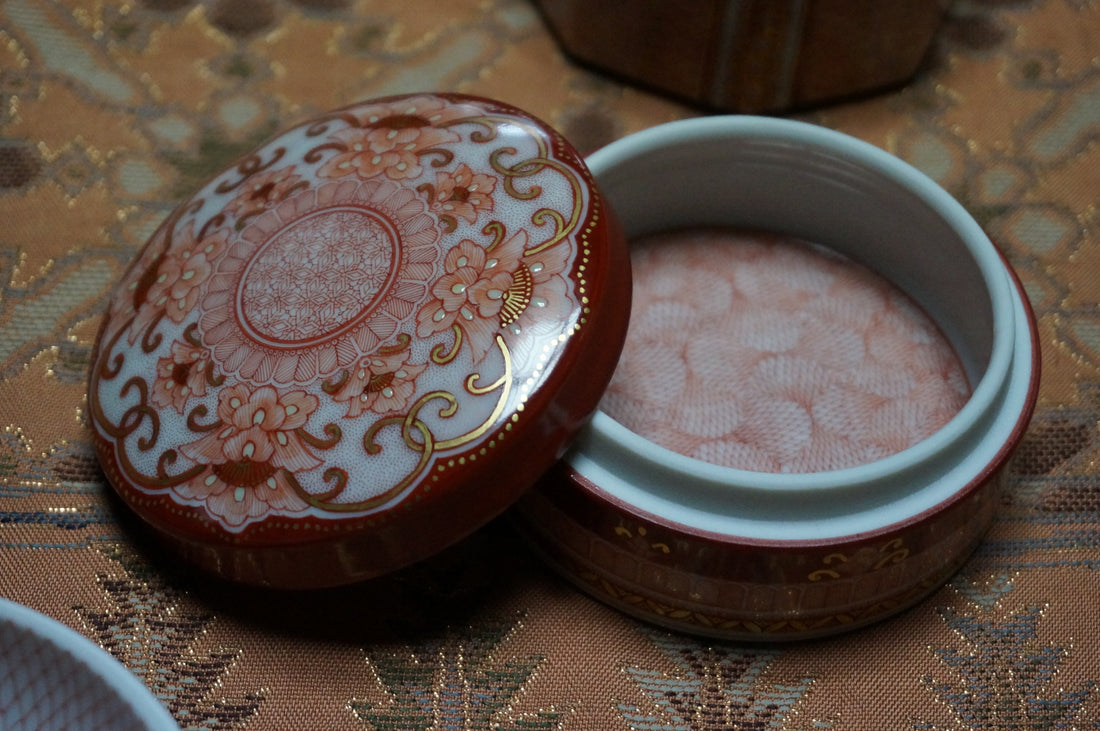
Kutani ware

[Region] Ishikawa Prefecture
[Summary] In the middle of the 17th century, it started as a clan's promotion policy. The style is categorized according to the time period: Ko-Kutani in the early Edo period, which was made by the feudal lord to be fired by a potter who studied in Arita; It is produced in Kanazawa City, Komatsu City, Kaga City, and Nomi City in the southern part of Ishikawa Prefecture. It is a production center of porcelain that represents Japan. Kutani Pottery Village is a collection of various facilities such as wholesalers, art museums, shops, hands-on corners, and galleries. The tea bowl festival is held during Golden Week.
Among the Living National Treasures are Tokuda Yasokichi, a glazed porcelain maker, Yoshida Mimune, a glazed porcelain maker, and Asakura Isokichi, who received the Order of Culture.
Techniques are classified into aote, which fills in the white background, and overglaze painting. The overglaze enamel includes five colors of yellow, green, blue, red, and purple, as well as kinrande with gold. New techniques such as fine print, blue grains, and underglaze gold are also being created. Locally produced Hanasaka pottery stone is used for the wooden base.

Aote Kutani (or Aote Kutani) is a type of porcelain that uses a lot of blue in the pattern (pattern on the surface) of Kutani ware made in Ishikawa Prefecture (Kaga and Daishoji domains). That is. Also known as Aokutani. Although it is said to be blue, it is actually green, and even though it is called porcelain, it looks like pottery, as it is generally called “half-pottery half-porcelain”. Animals and plants, mountains and water, geometric patterns, and famous paintings are drawn on the vase. Many of them have an inscription with auspicious characters for good fortune in a double square called 'Kakufuku' on the foot of the bottom.

Taking advantage of the characteristics of the red color paint that does not bleed easily, the entire vessel is painted in fine detail called “fine drawing”. In addition to red colored paint, many of the works are gorgeously decorated with gold decorations, which is a characteristic of red painting. The style of painting gold on a vessel whose background is painted in red is particularly called 'Kinrande' among red paintings. The highlight of the work is the fine painting, which requires a high level of craftsmanship, and the gorgeous combination of patterns and colors with gold decoration. Kutani ware's red painting is based on a work produced at Kasugayama kiln in Kanazawa under the guidance of Kyoto ware master Mokubei Aoki, and later worked at Miyamotoya kiln by Hachiro Iidaya. Uemon (Iidaya Hachiroemon) established the fine drawing style, which became the roots of modern red paintings.

A style of painting that freely utilizes green, yellow, purple, dark blue, and red color paints called "Kutani Gosai". It is also called "Gosai Te" because it makes full use of five colors of color paint. Another characteristic of overglaze painting is that the motif of the work is drawn pictorially and realistically in the center of the vessel. The highlight of the work is the skillful brushwork that creates a picture that seems to have slipped out of the folding screen or hanging scroll onto the vessel. In particular, it is said that the overglaze-painted Ko-Kutani porcelain is modeled after China's overglaze-painted porcelain from the late Ming dynasty to the early Qing dynasty. There are many masterpieces depicting animals and mountains (landscapes).

Shozui refers to the skillful dyeing made in the Jingdezhen kiln during the Chongzhen period (1628-1644) at the end of the Ming dynasty in China. Shozui was made by a specific order from Japan (presumed to be Kobori Enshu and its surroundings). In addition, since it was painted with Zhe Qing, the best of the earth gosu, it has a vivid lapis lazuli color and is considered to be the best dyed porcelain. Shozui is characterized by the so-called Shozui pattern, which makes extensive use of intricately drawn background patterns and geometric patterns such as twisted and circular patterns. There is this name because there is something with an inscription.

A technique that spread in the Taisho era. On top of the base color, fine green dots called blue grains are lined up, conveying the dignity and quality. It takes skill to make the size, color and spacing of the blue grains uniform. In addition to blue grains, there are also white grains and gold grains.

